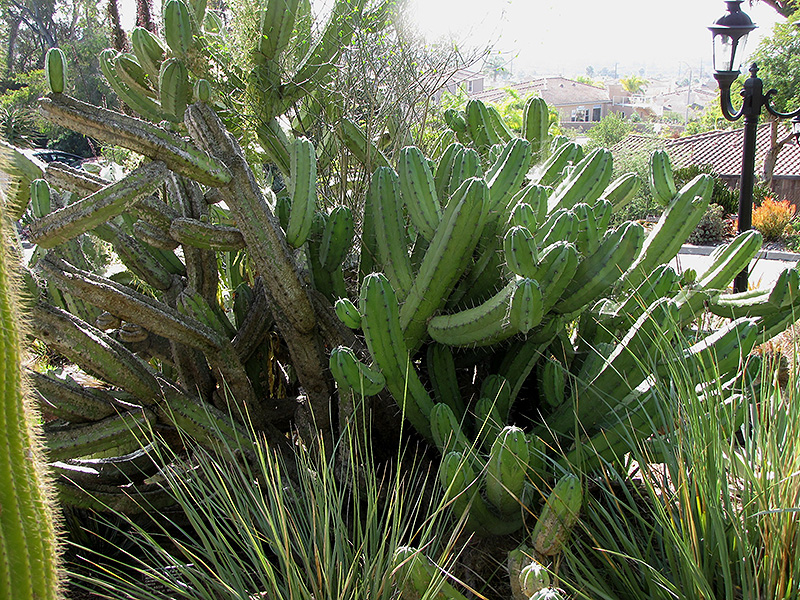Blue Candle
Description
An upright, columnar cactus that becomes tree-like with age, resembling a candelabra; features thick, cylindrical gray-green to blue stems; white to red flowers in spring, followed by edible dark red or blue fruits; an outstanding vertical accent
Landscape Attributes
Blue Candle is a large succulent evergreen plant with an upright spreading habit of growth. It tends to form a colony of solitary stems that spread out and away from the base. As a type of cactus, it has no true foliage; the body of the plant is wholly comprised of one or more spiny bluish-green stems which are prominently ribbed. With age, this plant will eventually develop a woody khaki (brownish-green) 'trunk' at its base.
Blue Candle is recommended for the following landscape applications;
Planting & Growing
Blue Candle will grow to be about 15 feet tall at maturity, with a spread of 7 feet. It is often either grown as a solitary specimen or permitted to grow into a broader colony as part of a garden composition. It grows at a medium rate, and under ideal conditions can be expected to live for 80 years or more.
This plant does best in full sun to partial shade. It requires an extremely dry, well-drained growing location, and will usually die in standing water. It is considered to be drought-tolerant, and thus makes an ideal choice for a low-water garden or xeriscape application. Like most succulents and cacti, this plant prefers to grow in poor soils and should therefore never be fertilized. It is not particular as to soil pH, but grows best in sandy soils. It is somewhat tolerant of urban pollution. This species is not originally from North America.
Blue Candle is a fine choice for the garden, but it is also a good selection for planting in outdoor pots and containers. Its large size and upright habit of growth lend it for use as a solitary accent, or in a composition surrounded by smaller plants around the base and those that spill over the edges. It is even sizeable enough that it can be grown alone in a suitable container. Note that when growing plants in outdoor containers and baskets, they may require more frequent waterings than they would in the yard or garden. Be aware that in our climate, this plant may be too tender to survive the winter if left outdoors in a container. Contact our experts for more information on how to protect it over the winter months.

